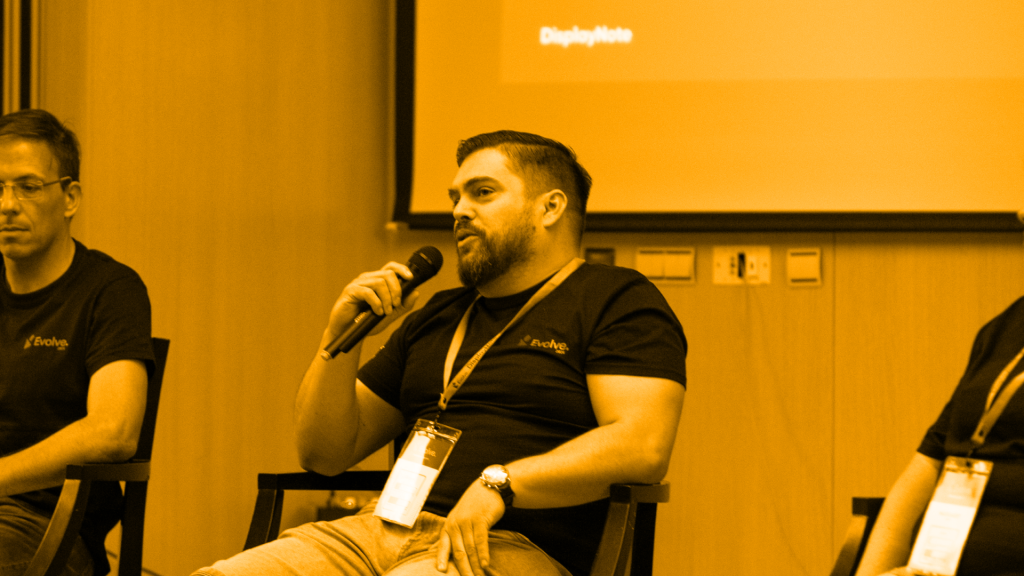
Work smarter, not harder.
Recently we brought you our first blog, highlighting some stats found by BT in their research paper ‘The Mobile Multiplier’. In this blog, we are going to delve into the stats surrounding the importance of communication and collaboration, and how to make meetings more productive.
So much to do, so little time. Let’s have a meeting!
Jonah Goldberg editor-at-large at National Review Online, once said “I think there needs to be a meeting to set an agenda for more meetings about meetings”.
We’ve all identified with this quote, at least once.
How many times have we sat through meetings which could have been a telephone call? Or where the task never progressed as the meeting went off on a tangent. We can’t believe that 47% of employees consider too many meetings to be the biggest waste of time – we thought it’d be more!
Just to be clear, we’re not discrediting the importance of meetings – most of the time, they are necessary. But they could be a lot more productive, with ideas being driven, and progressing during the meeting, rather than after. Let’s come back to this…
Talk to me.
We previously discussed the setbacks of a poor internal communications strategy: employees feeling isolated, kept out of the loop and finding it difficult to share ideas. So it’s no surprise BT found that better internal communication and access to data is a top priority, especially when working on the go. In fact, two-thirds of employees believe that better communication would make a big improvement to their organisation’s success.
It can be difficult enough to get a hold of one person in the office, let alone try to arrange a meeting with a whole bunch of colleagues. And when you need to include remote employees in the meeting, that’s another kettle of fish! Employees across the world agree, with 54% saying that they often waste time trying to get hold of people, which delays crucial decisions.
Contradictory to that though, over half of respondents believe less time is wasted on long emails and documents, because their colleagues are using mobile devices more. This is good progress. There’s nothing worse than emails being sent back and forth when a 5 minute phone call, for example, could have sorted the issue.
But the progress isn’t happening fast enough. It’s a classic case of one step forward, two steps back.
Stop. Collaborate and Listen.
If it’s difficult to even get in touch with a colleague, then it’s likely that collaboration isn’t taking place either. BT found that while applications like email and research on the web are clearly important, many office workers want new collaboration tools to boost their productivity and efficiency.
69% want screen-sharing on their smartphones, and almost half want video conferencing on their smartphones.
Independently, these two features would help boost collaboration, but used together, they truly transform a business. Big statement. Hear us out.
Screen-sharing combined with video conferencing allows for more interactivity and progress than with just a webcam video. Being able to show something visually, whilst talking about it at the same time, is the perfect pitch. They say a picture is worth a thousand words. When it comes to sharing ideas, or content, being able to see them visually is more beneficial. But having them explained articulately at the same time, no matter where the person is in the world, is priceless.
The ability of multi-screen sharing increases productivity. According to a study completed by Jon Peddie Research, productivity increases an average of 42% when using multiple displays.
Most workers, when they come together, use different programs – especially if they’re in different departments. Designers may need to show something in Photoshop, someone from Finance needs to share a spreadsheet, and a Marketer a web page. True collaboration only succeeds if workers can see content from different programs, and review and edit in the one place.
At DisplayNote Technologies, everything we do is designed to facilitate better, smarter, and faster collaboration, and wirelessly presenting up to 6 screens at once is a fundamental part of this.
Interaction gains traction.
Our attention spans aren’t great, approximately 8 seconds. This can be blamed on a few things. Complex technology, social media, advertisements (and our astounding ability to block them out). A Pew internet survey of nearly 2500 teachers found that 87% of teachers believe new technologies are creating an “easily distracted generation with short attention spans”.
The good news is, we know how to scan pages or websites and block out the information we don’t need.
And, if we’re interacting and engaging in something, this holds our attention, and boosts creativity and idea-sharing.
Collaboration tools, such as wireless presentation systems, allow employees to share content to a main display and other participants’ devices, explain the content via 2-way video conferencing, and allow instant feedback through annotations, sketches and comments.
Gone are the days were meetings are for talking through ideas, then following up on them afterwards. With collaborative tools, Ideas and actions are driven during the meeting – not after. Content can be shared, discussed, collaborated on, and saved and sent to participants in real time. Making meetings more productive and more efficient.
To give you a better idea of what we mean, take a look at Montage. It’s a solution we developed to help us more productive when it comes to sharing ideas and information with our teams.
Final Thoughts.
BT found very strong demand for better mobile collaboration tools in some sectors (professional services and technology). Overall though, IT decision makers understood why their colleagues want better collaboration tools. As one Management Consultant commented “it is critical for those on the go, working remotely at home, in hotels and across the country. We need to react quickly and we’re all given the very latest apps and devices”.
Employees want these tools so it’s easier to work in creative and dynamic teams, that today’s organisations need in order to compete globally, and deliver work within time constraints and tight budgets.
Not sure where to begin? Check out our blog ‘6 Things That Are Just Easier With a Wireless Presentation System’.
Next Steps…
To see our collaborative solution Montage in action, book a demo now!
Want to stay in the loop?
Keep up-to-date with everything DisplayNote – including new releases, job openings, and customer giveaways.
Don’t worry, we’ll not spam you and we’ll never share your email with anyone






